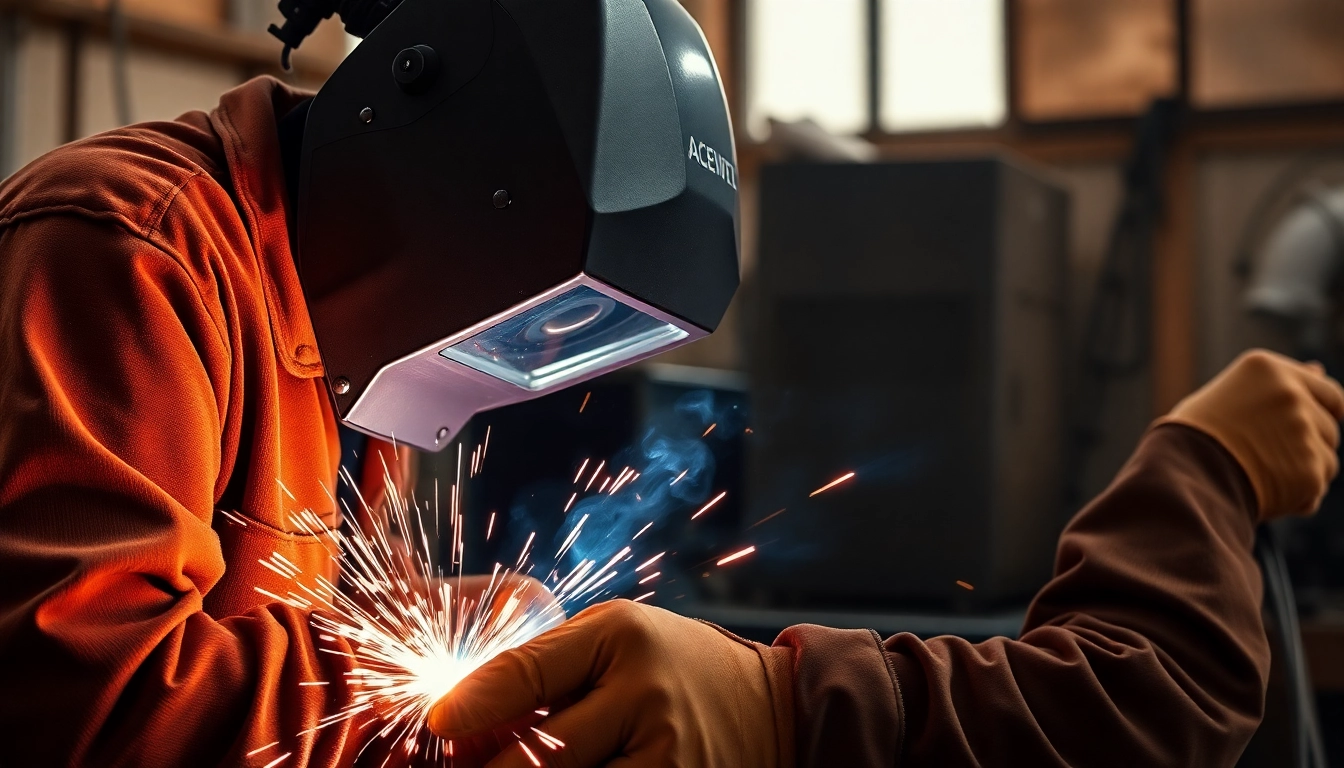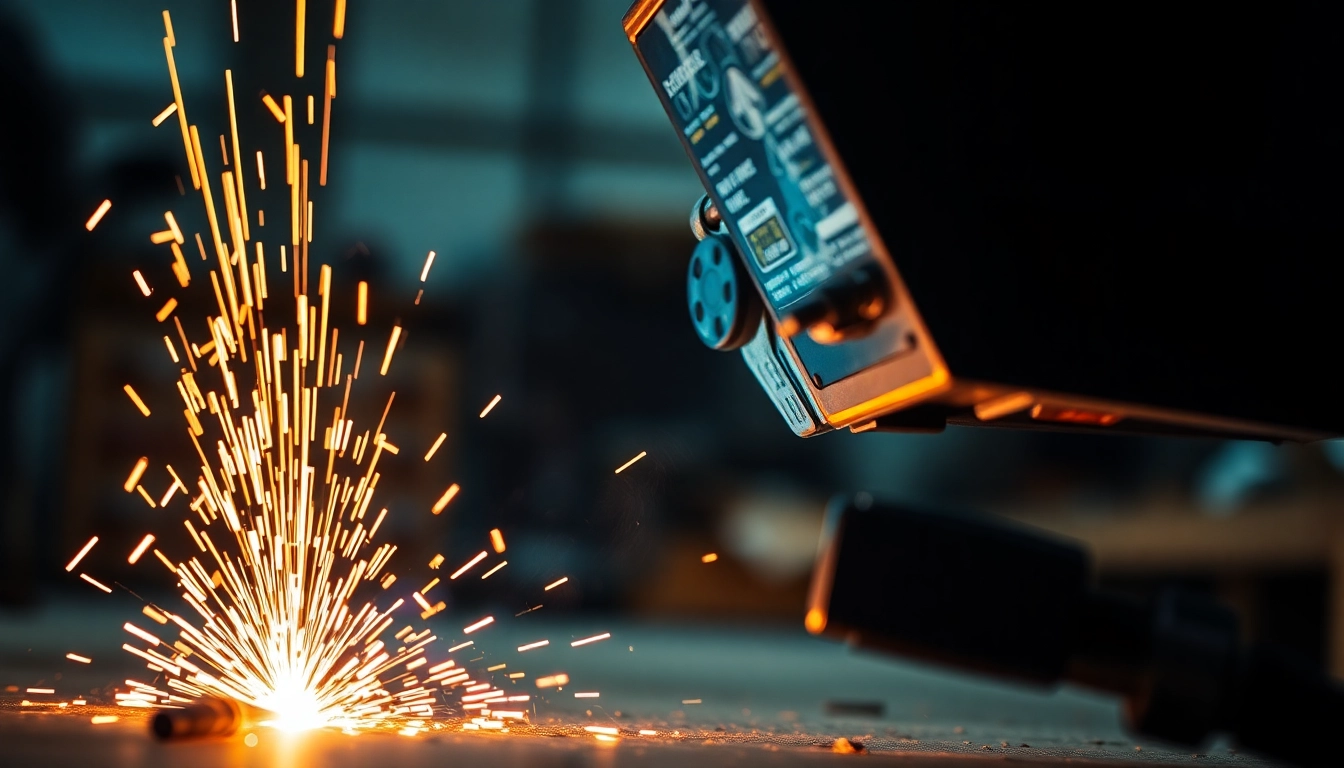Top AC DC TIG Welders Reviewed: Enhance Your Welding Skills
Understanding AC DC TIG Welders
Welding is a crucial skill in various industries, from automotive to aerospace, requiring precision and expertise. Among the different welding techniques, Tungsten Inert Gas (TIG) welding stands out due to its ability to produce high-quality welds on a variety of materials. An ac dc tig welder is particularly versatile, making it a go-to choice for professional and hobbyist welders alike. This article will delve into the intricacies of AC DC TIG welders, exploring their functionality, advantages, and essential features.
What is an AC DC TIG Welder?
An AC DC TIG welder is a type of welding machine that can operate on both alternating current (AC) and direct current (DC). AC is primarily used for welding non-ferrous metals like aluminum, as it can break through the oxide layer that often forms on these materials. On the other hand, DC is favored for welding ferrous metals such as steel and stainless steel due to its ability to deliver a smooth, stable arc. This dual functionality allows welders to work with a wider variety of materials and thicknesses, enhancing their capabilities and efficiency on the job.
Benefits of Using AC DC TIG Welders
- Versatility: As mentioned, the ability to switch between AC and DC expands the range of materials a welder can handle, allowing for intricate and varied projects.
- Precision: TIG welding is known for providing superior control and high-quality welds, which is essential for critical applications in industries like aerospace and automotive.
- Less Cleanup: The process produces minimal spatter, reducing cleanup time and providing a cleaner working environment.
- High Duty Cycles: Many AC DC TIG welders are designed for high duty cycles, which means they can operate for extended periods without overheating, making them suitable for continuous commercial use.
Key Features to Look For
When selecting an AC DC TIG welder, several key features should be considered:
- Output Power: Look for machines with adjustable output settings to accommodate various material types and thicknesses.
- Controls: Digital displays and advanced controls can enhance ease of use and precision in adjustments.
- Portability: Consider the weight and size of the welder, especially if you need to transport it frequently.
- Cooling System: Efficient cooling systems help maintain performance and longevity during extended use.
- Safety Features: Features like thermal overload protection and gas flow sensors can help prevent accidents and equipment damage.
Comparing AC vs. DC Welding
Differences Between AC and DC in Welding
The primary difference between AC and DC welding lies in the way the electric current flows. In AC welding, the direction of current reverses periodically, allowing the welder to break through the oxide layer present on aluminum and other non-ferrous metals. Meanwhile, DC welding maintains a constant direction, resulting in a more stable arc and is better suited for welding materials where a strong bond is required.
Which is Best for Your Applications?
The choice between AC and DC largely depends on the specific materials and types of projects you plan to undertake. For instance:
- AC: Best for welding aluminum and magnesium, particularly in applications requiring a clean finish.
- DC: Ideal for welding mild steel, stainless steel, and for penetration of thicker materials.
Understanding these differences is crucial for optimizing your welding outcomes, ensuring you select the right mode for your specific needs.
Common Applications for Each Type
Different projects require different welding methods:
- AC Applications: Aluminum fabrication, automotive bodywork, and art sculptures.
- DC Applications: Structural steel work, pipeline welding, and general fabrication tasks.
Choosing the Right AC DC TIG Welder
Factors to Consider When Buying
When investing in an AC DC TIG welder, consider the following factors:
- Skill Level: Beginners may benefit from models with user-friendly interfaces, while seasoned professionals might prefer advanced features.
- Material Types: Ensure the machine can handle the specific materials you’ll be working with.
- Brand Reputation: Research brands known for durability and customer service.
- Warranty and Support: Look for machines that come with warranties and reliable customer support options.
Budget-Friendly Options for Beginners
For those just starting, there are several budget-friendly AC DC TIG welders that do not compromise on quality:
- Eastwood TIG 200: A compact model ideal for beginners, priced under $1000, yet capable of delivering solid performance.
- PrimeWeld TIG225X: Offers great functionality for a reasonable price, making it an excellent choice for hobbyists.
- YesWelder TIG-205DS: Affordable with impressive features for new users, including a lightweight design.
Top-Rated AC DC TIG Welders in 2023
As of 2023, the following models have gained traction among users for their performance and reliability:
- Miller Multimatic 215: Known for its versatility and capability to weld various materials, Miller welders are a trusted name in the industry.
- Everlast PowerTIG 200DV: Highly praised for its dual voltage functionality, making it perfect for both home shops and professional settings.
- Lincoln Electric Square Wave TIG 200: Comes with advanced features designed specifically for hobbyists and professionals needing stringent standards.
Setting Up Your AC DC TIG Welder
Initial Setup and Calibration Tips
Setting up your AC DC TIG welder correctly can significantly affect your welding outcomes. Here’s a step-by-step guide:
- Choose an appropriate workplace with adequate ventilation and safety measures setup.
- Assemble the welder and connect it to a reliable power source, ensuring compatibility with the voltage requirements.
- Connect the gas supply and regulator. Ensure all joints are leak-free.
- Set the desired amperage according to the thickness of the material you’ll be welding.
- Calibrate the machine according to the specifications outlined in the user manual.
Safety Measures to Follow
Safety cannot be overemphasized in welding. Key measures include:
- Always wear proper personal protective equipment (PPE), including gloves, helmets, and flame-resistant clothing.
- Ensure that the workspace is free of flammable materials to minimize fire hazards.
- Use adequate ventilation to avoid inhaling harmful fumes.
- Regularly inspect equipment for any signs of wear or damage.
Essential Accessories for Optimal Performance
To maximize the efficacy of your AC DC TIG welder, consider investing in the following accessories:
- Welding Helmet: A high-quality auto-darkening helmet can greatly enhance comfort and safety.
- TIG Rods: Ensure you have the correct rods for the materials you are welding.
- Argon Gas Cylinder: Essential for TIG welding to provide a shielding atmosphere for the weld pool.
- Foot Pedal: Provides increased control over the welding arc and is recommended for precision work.
Frequently Asked Questions (FAQs)
Is AC or DC Better for TIG Welding?
It largely depends on the materials you’re working with. DC TIG welding is preferred for ferrous materials, providing a more stable arc and better penetration, while AC is essential for welding aluminum due to its ability to clean the oxide layer.
Can You Use an AC DC TIG Welder for Aluminum?
Yes, AC DC TIG welders are specifically designed to weld aluminum. The alternating current is necessary to break the oxide layer that can impede the welding process and leads to poor quality welds.
How to Maintain Your AC DC TIG Welder
Proper maintenance extends the life of your welder. Here are some maintenance tips:
- Clean the machine regularly to remove dust, debris, and spatter.
- Check and replace the gas liners and fittings when necessary to ensure proper gas flow.
- Inspect and replace worn-out tungsten electrodes to maintain weld quality.
- Regularly check the power cables and connectors for any damage.




Post Comment